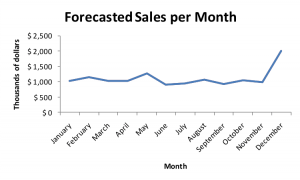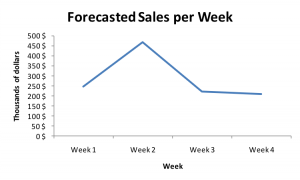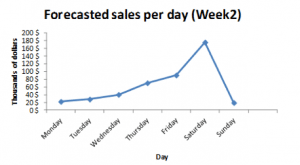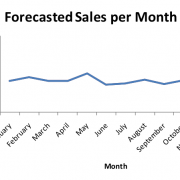Let’s suppose that you’re implementing TOC in Christy’s footwear, a company with the following characteristics: They own six stores that sell men and women’s shoes and hold about 1,000 SKUs per store. The six shops are spread throughout the same city and are just 30 minutes away from one another, so distances are definitely not an issue. Their biggest store functions simultaneously as a shop and as the central warehouse, so this store places the aggregated orders to the suppliers and holds most of the inventory. The central warehouse orders upon consumption from nearly a dozen suppliers that manufacture the shoes, and replenishes inventory upon consumption to the stores every day. The Replenishment Time (including order lead time) from the Central Warehouse to the stores is two days and from the suppliers to the Central Warehouse is nearly 4 weeks. You’ve already established buffers at the Central Warehouse and at the stores and both are ordering daily and being replenished as frequently as possible. You’ve just started to implement Dynamic Buffer Management in order to adjust buffers according to consumption.
It’s the beginning of April when William, the stores’ manager, tells you that next month it’s Mother’s Day, which will obviously increase demand. He wants to know if buffers at the stores and at the Central Warehouse should be increased. You ask him how big the increase in sales is and he answers that sales in the stores are expected to increase about 15% above the average, as shown in the following graph:

What would you answer? You should probably tell him that there’s no need to increase buffers since buffer management can cope with increases in demand of up to 30%, right? Wrong! If this is your answer, you’ve just cost this company, literally, thousands of dollars.
According to the Retailer S&T, “if the demand increase is less than 30% of the inventory target the improvement due to the additional information is negligible”. This is right on the money. However, note that the tree is explicitly talking about a 30% increase of the inventory target, which means that the increase is related to a time frame. And since the inventory target is calculated as the maximum forecasted consumption within a reliable replenishment time, this time frame is none other than the replenishment time; in our example, two days.
Nonetheless, many TOC practitioners mistakenly interpret this as an increase in demand per month, which will inevitably lead to conclude that there’s no need to increase the buffer targets. But, if you zoom in on sales, and look at weekly sales, the real picture becomes clearer:

This additional data really changes the whole analysis, doesn’t it? Looking at weekly sales it is now evident that there’s almost a 100% increase in demand from one week to the next! But this isn’t enough. Since the replenishment time is 2 days, we need to zoom in even more

.
If Replenishment Time is two days from the Central Warehouse to the stores, there’s no way that DBM will cope with this increase by itself in time. The increase suggested by DBM would probably arrive near the end of week 2 because it will take at least a couple of days to trigger the alert, and another two days to receive it). Besides, the increase would be only 33%, so not only will the increase be untimely, it will also be insufficient.
Let’s take a another look at what’s written in the S&T: “if the demand increase is less than 30% of the inventory target the improvement due to the additional information is negligible”. What this really means is that if demand increases more than 30% within the replenishment time, DBM won’t react fast enough. According to this, buffers at the stores should be significantly increased before the start of the second week of August. Still, buffers in the Central Warehouse should stay the same. Why? Because since replenishment time is one month, the increase within this time frame is less than 30% meaning that the buffers at the Central Warehouse should suffice. It’s all just a matter of reading carefully what is written in the S&Ts. Every word counts.



